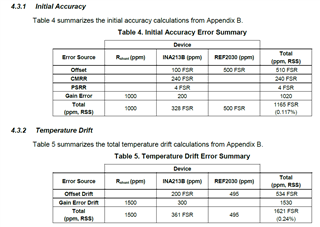Hi Support Team,
I have some questions about TIDU357A and this is continuation from below thread.
(1-1) Could you please tell me what Vs_INA_spec and Vs_INA_sys on page 22 indicate?
(1-2) Could you explain the idea of how to calculate EIna_psrr?
(2) Is it correct to think that all the errors used in Tables 4 and 5 on page 10 are standard deviations?
Thank you for your help.
Best Regards,
Taito Takemura


